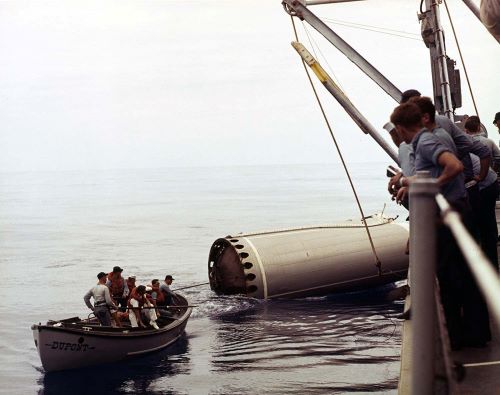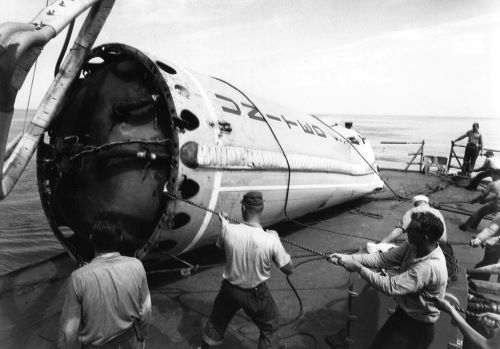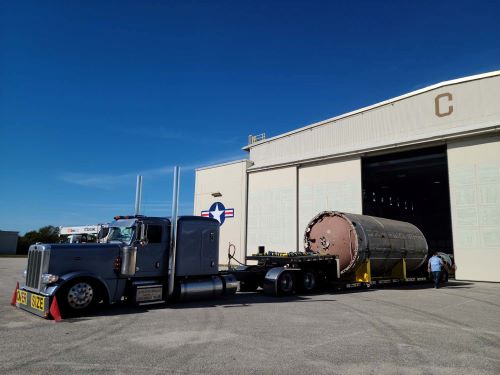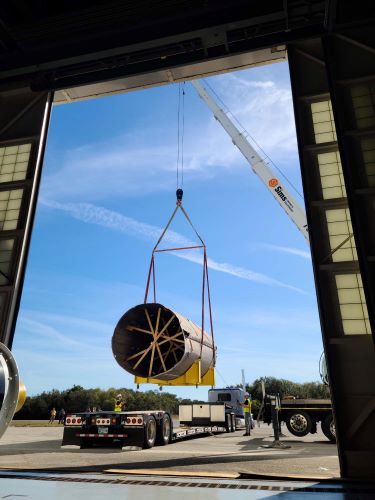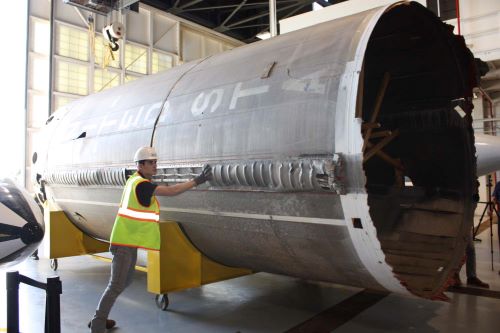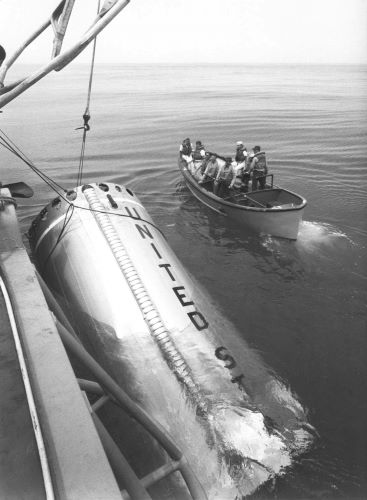

Recovery of Booster Segment
Overview
Display Location:
- Hangar C, Cape Canaveral Space Force Station
Type: Titan II GLV
Designation: s/n 62-12560
Payload: Astronauts
Agency: U.S. Air Force / NASA
Contractor: Martin Company
Cape Canaveral Space Force Operations: 1965
History
The Gemini 5 mission began at Launch Complex 19 on Cape Kennedy Air Force Station (now Cape Canaveral Space Force Station) on 21 August 1965. Astronauts L. Gordon “Gordo” Cooper and Charles “Pete” Conrad Jr. were propelled into orbit in a Gemini spacecraft atop a modified Titan II rocket, or Gemini Launch Vehicle (GLV). The eight-day mission broke the duration in space record, which brought America one step closer to the Moon. Cooper also became the first person to orbit the Earth a second time (he flew in the Mercury-Atlas 9 mission in 1963). Other milestones included the first time onboard fuel cells were used to power a spacecraft instead of batteries and the first American crewed spaceflight to have an official mission insignia.
Upon successful launch of the Gemini 5 spacecraft, the first stage of the Titan booster crashed into the Atlantic Ocean at incredible speed. It broke in half, with the lower portion (including engines) sinking to the ocean floor. The upper half miraculously remained afloat. A military plane spotted the booster and the USS Du Pont (a U.S. Navy destroyer) retrieved it several days after launch. The 27’ by 10’ diameter booster fragment then returned to Cape Canaveral for analysis. From there it traveled to the Martin Company in Baltimore and then the Air Force Museum at Wright-Patterson AFB. The booster eventually ended up at the U.S. Space & Rocket Center in Huntsville, Alabama, where it remained on display for decades.
In 2022-2023 the U.S. Space Force Historical Foundation, Inc. funded the stabilization, display cradle, and transportation of the GT-5 booster from Huntsville to Cape Canaveral Space Force Station. The booster returned home to the Cape on 19 January 2023 and was placed on display in historic Hangar C. It remains the only booster retrieved from all NASA crewed missions leading up to the Shuttle program. It is also the only retrieved Titan booster in existence. The booster exemplifies the spirit of exploration and innovation that defined America’s historic space programs.
An engineering evaluation of the GT-5 recovered first stage offers some insightful statistics for the booster segment. It reached an apogee of 79.5 miles and a top velocity of 5,931 miles per hour. The booster splashed down 454 miles down the Eastern Range at an estimated speed of 270 miles per hour. During ascent and reentry, the booster reached a maximum heating of 408 degrees Fahrenheit.
Related Pages
- Launch Complex 19 – https://ccspacemuseum.org/facilities/launch-complex-19/
- Hangar C – https://ccspacemuseum.org/artifacts/hangar-c/
- Gemini Vehicle Test Console – https://ccspacemuseum.org/artifacts/gemini-vehicle-test-console/
- Launch Complex 19 White Room – https://ccspacemuseum.org/artifacts/launch-complex-19-white-room/
- Launch Complex 19 Periscope – https://ccspacemuseum.org/artifacts/launch-complex-19-periscope-cushion/
- Gemini Boilerplate Capsule – https://ccspacemuseum.org/artifacts/gemini-boilerplate-capsule/

